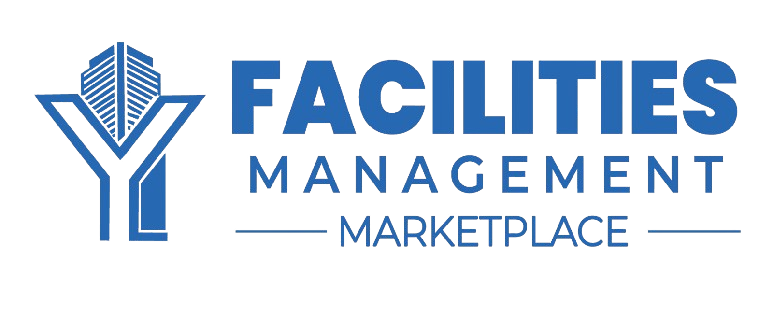How To Improve The Safety Standards In The FM Industry?
18, Jan 2025
5
Facility Management is one of the core functions of any organization and plays a key role in ensuring the overall safety and well-being of all the people involved. From air quality to the functionality of the operational space, the facilities management team is responsible for managing these diverse requirements. It also means that they are responsible for understanding and mitigating the range of health and safety risks that facilities and their users can be exposed to.
If we talk numbers, the India: Workplace Safety Report FY 2023 stated that the total recordable workplace injuries went up from 9,889 in FY22 to 10,733 in FY23. More importantly, the total number of high-consequence injuries went up significantly from 679 to 907 in the same period.
An efficient facility manager is responsible for ensuring that every aspect of a physical workspace works in unison to ensure the optimum safety for its users. This article discusses how facilities management team can improve safety standards in their workplace.
What is Facility Safety?
Facility safety refers to developing SOPs (standard operating procedures) and setting up best practices to ensure optimum defense against health and safety risks in a facility. For this, a range of tools and behavioural requirements, such as the usage safety process (Risk assessment and control, Hazard identifications, Emergency response planning), PPE kits, and regular monitoring, must be in place and followed diligently to ensure a safe working environment for all employees.
Tips to Improve Health and Safety in the FM Industry
Effective facility management can ensure the smooth working of the modern workplace and also aid in improved performance, lower downtime, and improved overall satisfaction of all the users involved.
Here are some tips to ramp up health and safety in the FM industry -
Decode your Risk
The first step towards improving something is to understand it thoroughly. Understanding your risk comprises five critical steps -
- System Description - Take note of workplace activity and equipment status while keeping in mind the SOPs and specific user needs.
- Identification of Potential Hazards - Unearth potential hazards which could take a toll on your employees physically, mentally, or in the form of equipment damage.
- Analyse Risks - Figure out the probable workplace hazards and their chances of occurrence and the level of threat they pose to the facility.
- Gauge the Risks - Use a risk matrix to understand the applicability of safety risk for each potential hazard.
- Bring Controls in Place - Minimize or negate marked risks through the implementation of safety measures.
Learn more about your Processes and the Facility
In order to understand risk better, it is vital for a facility manager to know their processes and facilities well. For this, process flowcharts and workflow diagrams often come handy. While the former explains the physical aspect of a facility (a map) the latter deciphers how the tasks are actually accomplished, individually and collectively.
Through this, facility managers can easily understand the flow of materials, equipment, and the workforce and highlight probable safety hazards, such as subpar working conditions, presence of potentially hazardous materials or objects, and more. Once all the hazards have been chalked out, the manager can move on to redesigning the layout to address these issues.
Set Clear Safety Guidelines
Most facilities have set safety procedures in place that guide employees regarding how they use the equipment and facility services regularly. If these are absent at your facility, getting them up and running is the first step to ensuring safety. Also, these guidelines can often be too technical or laden with jargon that your team may find difficult to comprehend.
Facility managers are responsible to review these guidelines regularly to ensure their relevance and they must discuss the same with people with relevant expertise to ensure the potential risks are kept at bay. With laws and safety regulations getting updated often, having a clear set of guidelines and updating them proactively can be instrumental in avoiding unnecessary workplace accidents.
Develop a Safety Management System (SMS)
SMS or safety management systems are a universal way of managing safety risks in a facility, across type, industries, and divisions. It comprises four components - safety policy and objectives, safety risk management, safety assurance, and safety promotion. Most facility managers follow a PDCA (Plan-Do-Check-Act) approach to nail their safety management system requirements. The PDCA states the step-by-step process for planning, implementing, correcting, and reviewing safety and its effectiveness regularly.
Opt for Quality
Facility managers today are required to be proactive and prudent in their choice of equipment and technology for their facilities. Chances of mishaps often extrapolate when there is a lack of equipment and tools or when the tools available for a job are incapable of providing complete safety. While cheaper equipment can enable you to meet your financial budgets better, the risk it poses is significantly higher, and your employees do not deserve it.
So, facility managers must ensure that they get the best equipment within their budget. If needed, they can seek an extension if they feel that the quality of the items is being sacrificed for the sake of the budget. In addition to equipment, other safety gear, such as PPE kits, also need to be provided depending on the facility’s specific needs.
Promote Accountability and Reward Responsible Behaviour
A facility is as safe as its people let it be. So, while having a clear set of regulations is a must-have, it is also imperative that every individual in the workforce is held responsible for their acts. Optimum safety is only possible when you allow your team members to voice their concerns without facing any unwanted consequences.
You can also incentivise responsible behaviour to make employees feel at home and be more mindful of their behaviour and the workplace. So, a lot of facilities today have developed employee recognition programs and platforms and rewards the team members for their positive behaviour and also showcase the same as examples for others in the workforce to follow.
Conclusion
In the modern facilities workplace, health and safety is no longer a one-time affair. Instead, facility managers must ensure every member of the team embraces it as a hobby and follows it meticulously to bring about the safety standards that they would be proud of.
A safe work environment protects employees from unwanted accidents, illnesses, and injuries and keeps them motivated to deliver better results. While it may result in additional outflow for the manager upfront, the benefits they reap over time are more than sufficient to cover the same. For this, managers must accept safety and health regulations beyond legal obligations to ensure long-term well-being and prosperity for the employees and the organization.
share Share now

 Podcasts
Podcasts 






.png)






